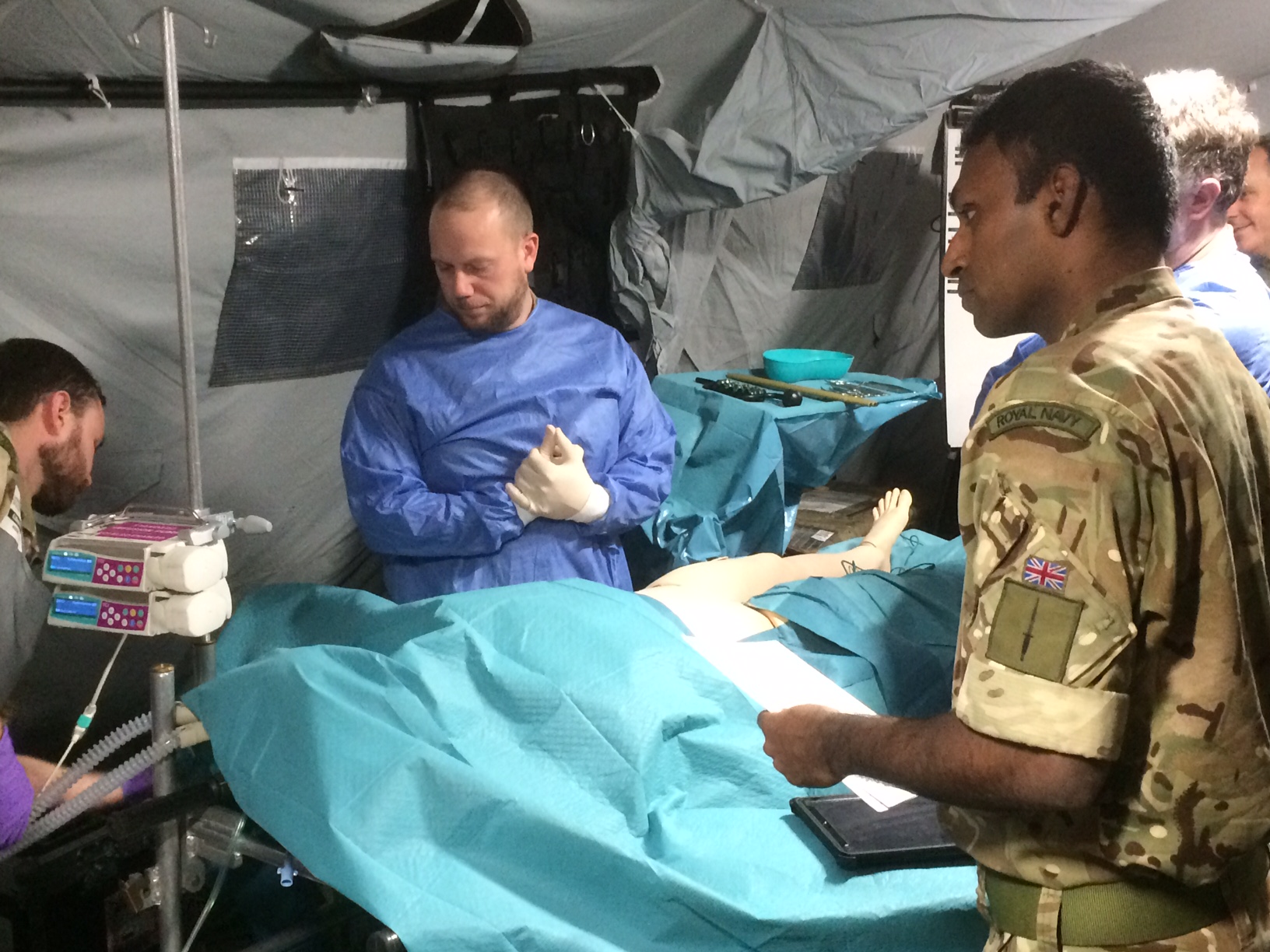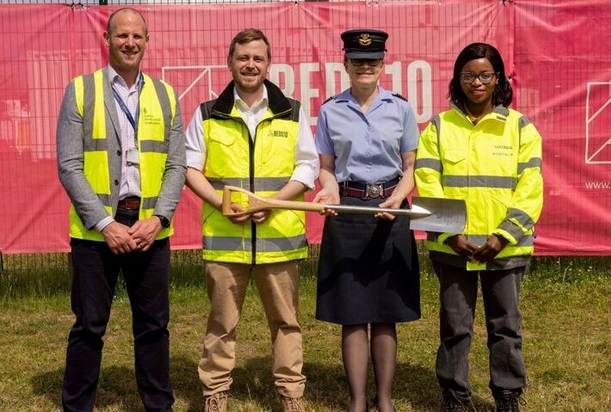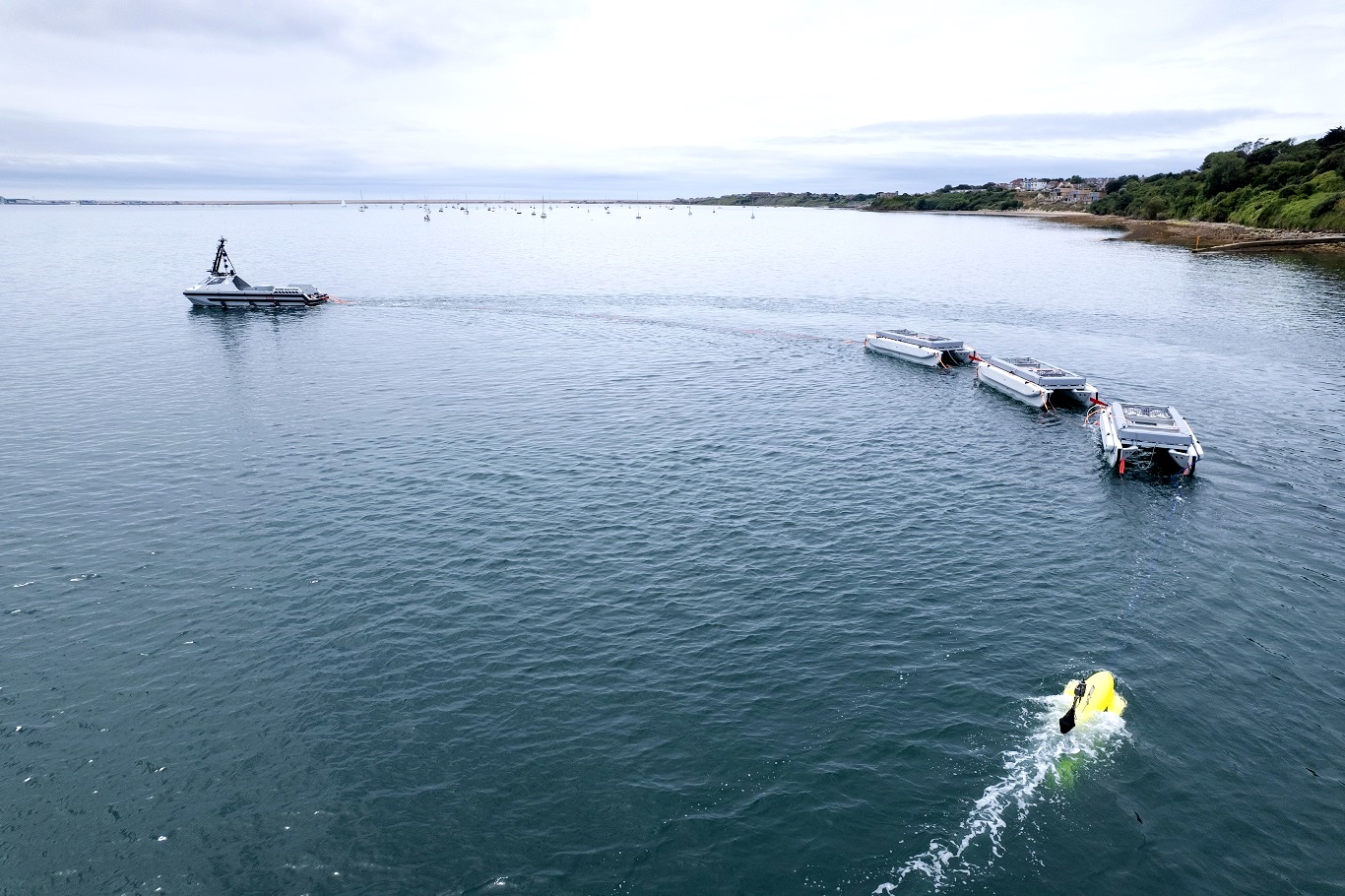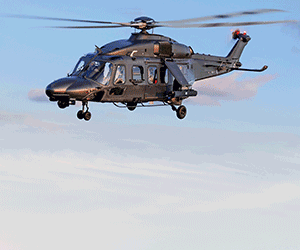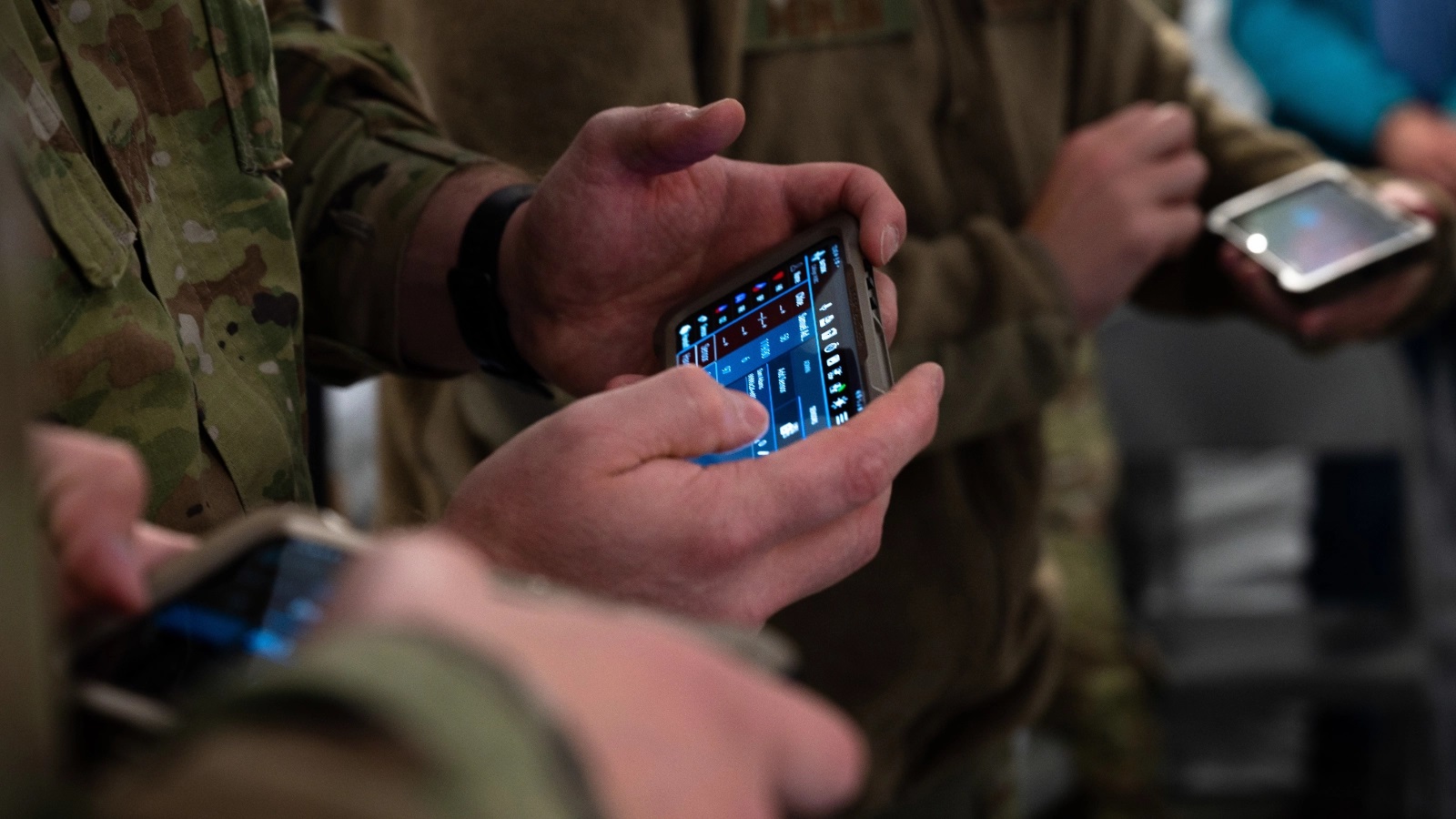Royal Navy medics try new tech on return to Arctic
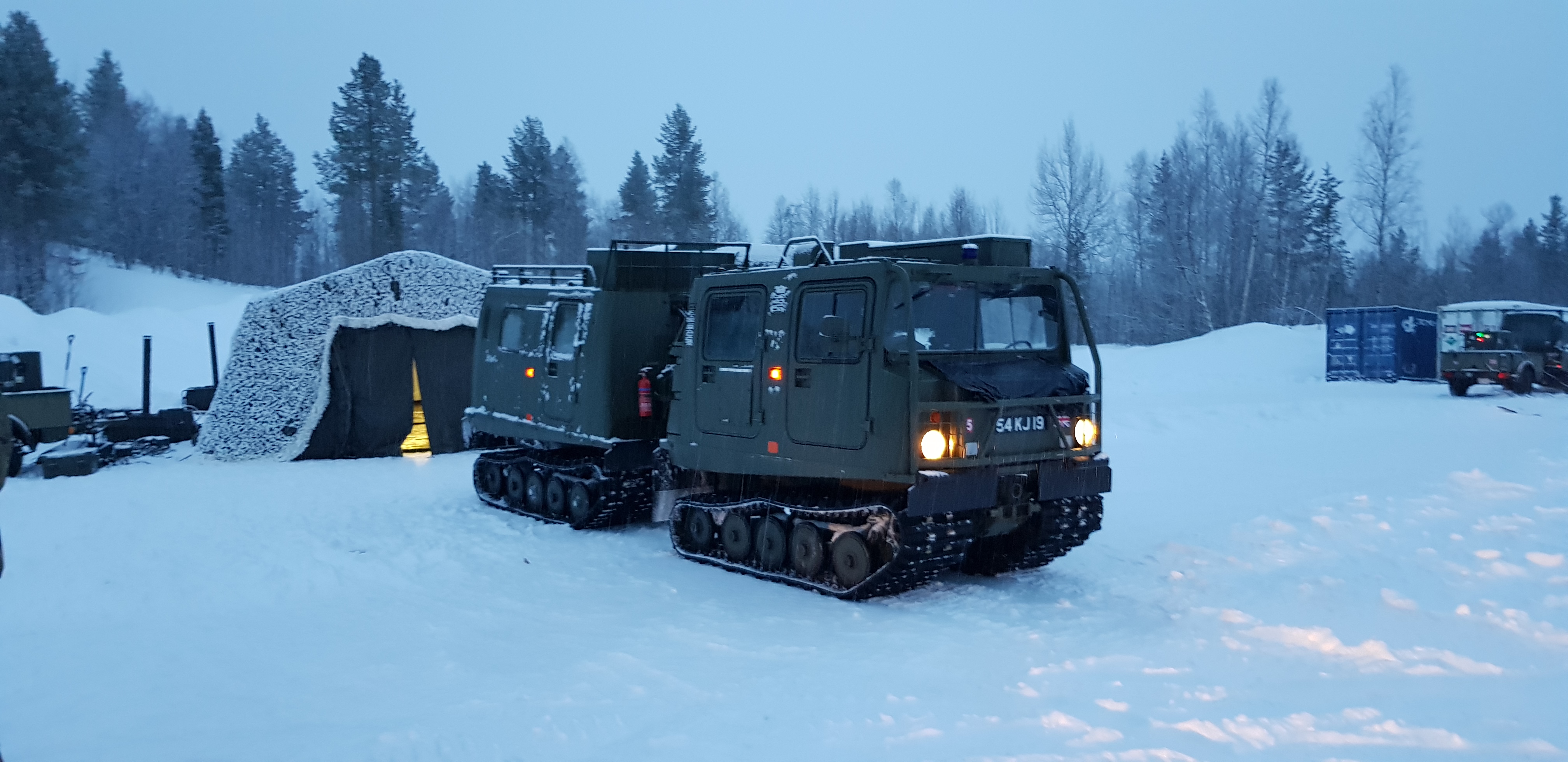
Images courtesy Royal Navy
The 50 men and women of the Commando Forward Surgical Group have returned to the Arctic Circle for the first time in more than 15 years.
They are re-learning the art of treating casualties in the unforgiving Arctic environment, where temperatures can drop below -30C.
The return to the snow led the medics to look again at the kit they use.
They found the long-serving tent equipment - metal poles, pegs, canvas - which has been used extensively in Iraq and Afghanistan was not suited to sub-zero temperatures.
The tent complex, which features a reception, A&E section, operating theatre, blood lab, X-ray area and intensive care 'ward', took a good three hours to erect and fit out.
Dismantling proved equally long-winded as poles froze and canvas tore or deformed from repeated freezing-defrosting.
In its place, funded by the Office for the Chief Technology Officer (Octo) as part of the Royal Navy's Innovation drive, an inflatable tent which can be built in seven minutes and receive its first casualty inside 90.
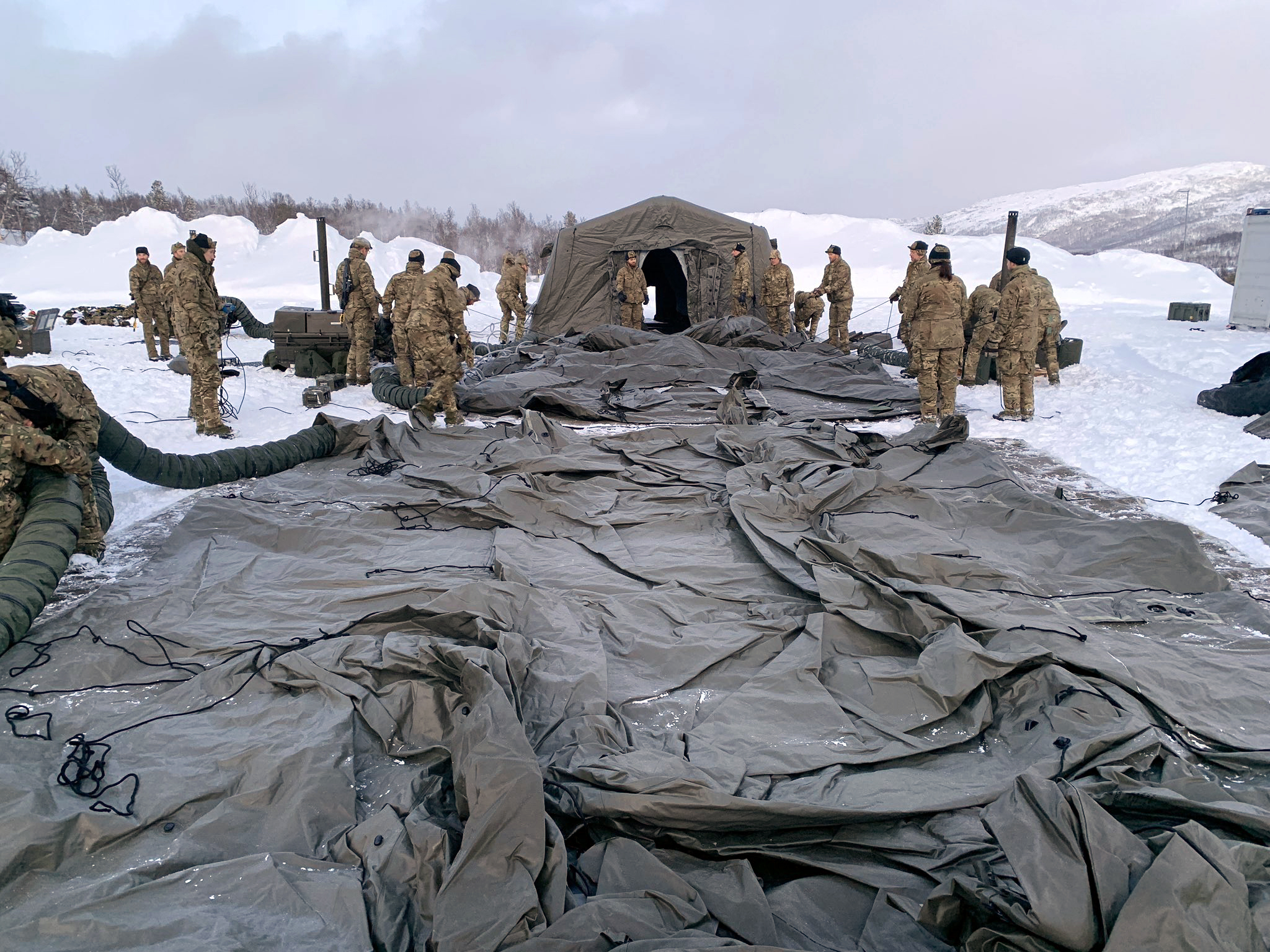
It can be ‘collapsed’ in a similar time frame, perhaps quicker, packed up in shipping containers, loaded on to a handful of trucks ready for its next location.
Lieutenant Commander Steve Andrews, in charge of Medical Squadron said: “It’s a game-changer, the number one thing which has made a difference to the way we work,” enthused Lieutenant Commander Steve Andrews, in charge of Medical Squadron."
Another innovation supporting this winter’s training around Bardufoss, 200 miles inside the Arctic Circle, is the ‘reefer’ - a refrigerated shipping container with a bolted-on heater/cooler to ensure neither equipment nor medicines are too warm or cold. It, like the blow-up tent, was suggested by Norwegian military medics, world leaders in treating casualties in this unforgiving environment.
Inside the hospital facility, a casualty wears a ‘snap bracelet’ - what looks like a small ruler, but slap it against a patient’s wrist and it coils around snake-like. It also doubles up as a USB stick holding information about the injured person.
That information has been recorded at the first aid post courtesy of another new piece of kit: the Tempus Pro, which looks like a chunky iPad and monitors a patient’s vitals. It’ll last for 14 hours on one charge, can be used in the field, in the casualty facility, in an NHS hospital.
It connects to medical databases securely and wirelessly real time - or you can download the data on to the snap bracelet. You can also screen grab the information. Or you can take a picture/record a video of the patient. And transmit that. You can also plug in ultrasound scanners and endoscopes.
“All the information on the casualty is here from the moment they are first treated, all the way back to the UK,” explained Petty Officer James Morwood, an operating department practitioner.
“We’ve got six of them. They’re good, they work in extreme temperatures, they get battered around and still work because they’re rugged.”
Tech plays a key role during the surgery. A camera above the patient feeds live imagery of the operation to a cloud-based server which a surgeon in the UK can watch and offer advice if necessary… or simply act as a safe pair of hands.
Colonel Aldeiy Alderson, Commando Logistics Regiment’s Commanding Officer, explained: "High-end battlefield wounds and trauma are our medics’ comfort zone.
“But say you’ve been on a hurricane relief mission, dealing with one casualty after another, day after day, you’re tired. The guy on the other end of the video screen will be keeping you on your toes to make sure you don’t make a mistake.”
The Royal Navy and Royal Marines are investing in and embracing new technology as they looks to their future needs. To thrive in the future, the naval service is committed to the latest technological advancements.


